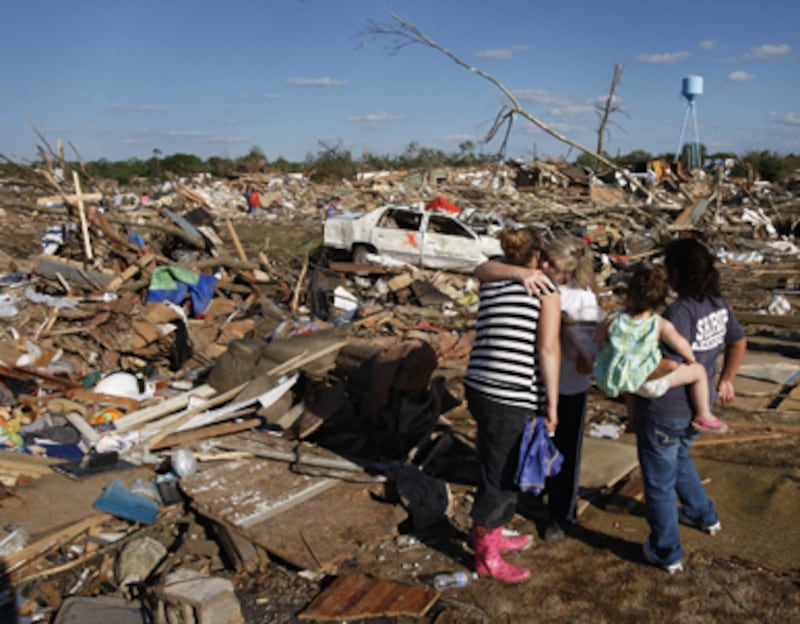The string of tornadoes that ravaged the South this week broke records, killed more than 300 people, and left many searching for an explanation of nature’s wrath. Could climate change be to blame?
Gallery: The Tornadoes’ Devastation

It’s easy to understand the speculation. Associating changes in global climate with severe weather events seems logical enough, and some scientists have even pushed such a theory in the blogosphere. Supporting evidence, however, is lacking. “The issue of climate change and extreme events is a bit like catnip,” says Roger Pielke Jr., an environmental studies professor at the University of Colorado at Boulder. “It’s very attractive, seductive even, to use it in political debate because it appears to be the sort of thing that people will respond to. But going out on too thin a scientific limb can hurt the credibility of climate science and detract from the real issues.”
Historical data do show tornado frequency trending upward as global temperatures increase. But that’s only a correlation, several climate scientists say, and a misleading one at that. More people are observing and reporting tornadoes these days. Once one accounts for the increases in reporting over time, the trend vanishes, showing only natural variability year to year. Furthermore, the majority of the hurricanes reported in recent years are weak ones.
The bottom line: It’s plausible that the warming of our planet could affect the frequency and intensity of tornadoes, though there's little solid evidence to back up the claim.
Tornadoes form from severe thunderstorms and require a complex mix of conditions, among them warm, moist air low in the atmosphere and wind shear—vertical changes in wind direction and speed. A warming planet means more moisture in the air and less wind shear, favoring more thunderstorms, but not necessarily the kind that give birth to tornadoes, says Harold Brooks, a meteorologist at the National Severe Storms Laboratory.
“We have very good knowledge of the basic requirements for the kinds of storms that produce tornadoes,” says Walker Ashley, an associate professor of meteorology at Northern Illinois University. “But why some storms produce tornadoes and others don’t is less well understood.”
Kevin Trenberth, a senior scientist at the National Center for Atmospheric Research, has studied the impact of climate change on severe weather extensively and found that it could be responsible for an increase of between 4 percent and 5 percent in water vapor in the lower atmosphere. He says that effect could have amounted to an extra inch of rain during Hurricane Katrina, for example, but what it means for tornado frequency and severity is less than clear. “I don’t think we can say anything concrete one way or the other for tornadoes with regard to climate change, although I think it would be wrong to completely dismiss it,” he says. If there is a lurking, as yet undiscovered link, though, it could take several more decades of research to discover it.
Still, some experts warn that getting caught up in explaining tornado trends, or the politics of climate change, can obscure a larger issue: the increasing vulnerability of our population to disaster. Population trends such as dramatic growth, urbanization, and more housing that is constructed on flood plains and other susceptible areas lead to greater risk of disaster, the thinking goes. In terms of human impact, “this could amount to a much bigger problem than having 10 or 20 more tornadoes in a given year due to climate change, even if it were to happen,” Ashley says. “I do think it’s important that science get the answer to whether we’ll have more hurricanes and tornadoes, but in the meanwhile we need to address this vulnerability.”
Pielke echoes Ashley’s point. “The ability to warn people of extreme weather was one of the great achievements of the 20th century,” he says, and that technology has helped reduce the number of tornado-related deaths substantially. “The challenge now is to continue this remarkable track record, even as increasing population and urbanization puts more people in harm’s way. It won’t happen automatically.”
Ian Yarett reports on science, the environment, and health for Newsweek.



